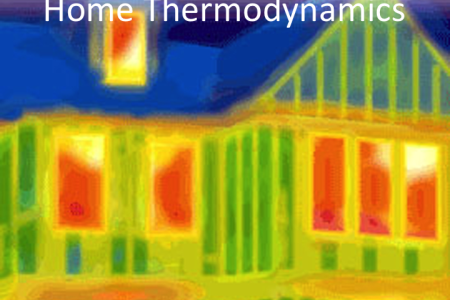Why is My Home Too Cold?
A severe winter storm swept through Alabama last night, leaving many families chilled by single-digit temperatures. A dusting of snow dramatically reveals where homes are losing heat.

Snow melt from heat loss in Huntsville, Alabama today. Snow melt at top is caused by heat loss from interior heated space, in contrast to areas of the roof over unheated carport and eaves. Heat loss from air leaks and heat transfer is easy to fix.
A photo taken in Sherwood Park this morning shows where heat loss from the home has melted the snow on the roof, while snow is not melted over the unheated carport and eaves. Heat flow through the ceiling insulation and holes in the ceiling have warmed the attic space under the roof to melt the snow, a clear sign this home will benefit from air-sealing and more insulation in the attic.
The roof-top snow melt visualizes heat loss in the same way a thermal camera does, documenting where existing homes can benefit from energy-saving improvements. More important, however, is the impact of heat loss on indoor comfort. Even when you can’t see heat loss, you can feel drafts from air leaks and the chill of cold walls, ceilings and floors.
Your home loses heat two ways – first, heat flows through the structure – walls, floors and ceilings. Second, warm indoor air escapes through holes and gaps in drywall – like recessed lights, plumbing, electrical outlets, and the heating and cooling duct system. The impact of air leaks is compounded as cold outside air is drawn into the home as warm air escapes.
Insulating your attic to R-38 will reduce heat flow and air-sealing gaps and holes will reduce air leaks and cold drafts, saving money by reducing utility bills. Energy savings will usually pay back the cost of insulation and air sealing in two or three years. After that, the cash savings go right in your pocket. However, what most people really care about is keeping their family snug and warm on the coldest of winter nights, and that’s priceless.

Homes need a continuous layer of insulation and an air barrier to keep heat in the home. Fixing the thermal performance of your home will improve comfort year ’round and save money, too.
The AlabamaWISE program empowers families solve energy-related problems with their home by connecting them to trusted contractors, financial resources, and unbiased advice about how to make homes comfortable, healthy and affordable with home improvements that save money and energy.


Comments are closed.